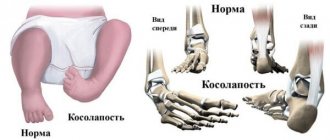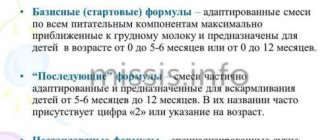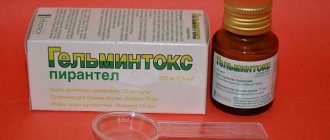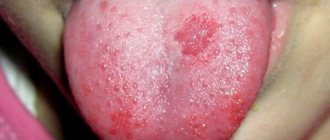From birth, parents take care of the health of their child, creating all the necessary conditions in which he will fully grow and develop. Considering the modern pace of life, the presence of a large number of diseases of different etiologies and localizations, it is very difficult to protect your child, but at the same time, attentive and caring parents will not miss the moment when their child’s health deteriorates or health problems appear. A common symptom occurring in children of all ages is nausea, which can occur at any time of the day and be caused by multiple causes.
General concept of nausea
When a child feels sick in the morning, there can be a variety of reasons, from ordinary overeating to severe pathological processes in the body requiring immediate medical attention. The main task of parents is to timely establish the true cause of nausea and promptly take the necessary measures that will help improve the child’s condition.
Nausea is an unpleasant sensation in the abdomen, chest, and mouth, which is characterized by a feeling of impending vomiting, weakness, increased sweating, vomiting, sometimes fever and other symptoms. Often, in a child, nausea as an independent ailment means little, and only accompanying symptoms can reveal the underlying cause.
Nausea in a child in the morning most often occurs when the peristalsis of the stomach and upper gastrointestinal tract is disrupted, caused by infectious factors or inflammation. Very rarely, this may be a tumor formation in the occipital region of the brain, which, in addition to morning sickness, is accompanied by other neurological disorders. Let's look at the main reasons that cause nausea in children.
What is nausea
Unpleasant sensations in the mouth, stomach, and chest area are familiar to many. A characteristic feeling is the feeling of impending vomiting. These are all signs of nausea. Depending on the reasons causing the unpleasant condition, other symptoms may be observed, such as tingling in the heart area, increased body temperature. They rarely appear as an independent symptom. Pathology can be identified thanks to the accompanying signs of a particular disease. The diagnosis can be made by a pediatrician after a thorough examination of the young patient.

Refusal to eat is one of the signs of nausea in a child
Impaired gastric motility is the most common cause of morning sickness in children. Infectious or inflammatory factors can provoke the development of an unpleasant symptom. Less commonly, nausea indicates the development of a malignant tumor in the occipital region of the brain.
A teenager can easily describe his unpleasant sensations. Typical complaints are bitterness in the mouth and a feeling of heaviness in the stomach. It is more difficult to recognize nausea in babies who cannot yet speak. Parents should pay attention to the following signs:
- pale skin;
- the child often asks for a drink;
- decreased number of urinations;
- increased drowsiness;
- moodiness;
- change in body temperature (the indicator can be either decreased or increased).
If you detect at least one of the listed symptoms in an infant, there is a reason to immediately consult a pediatrician.
Causes of nausea in children in the morning
Nausea in a child is a serious signal to parents that not everything is in order in their baby’s body. There are a huge number of reasons that provoke this symptom, as mentioned above, most often they are banal and harmless, but sometimes it can be a sign of a formidable and dangerous pathological process:
Food intoxication (poisoning)
It develops after eating low-quality food in the evening, containing a large number of harmful components, including waste products of microorganisms, so-called exotoxins. If a child feels sick and vomits, he may develop dehydration, which can be more dangerous than the microbial toxins themselves. In case of poisoning, the body temperature usually rises and stool is disrupted, diarrhea occurs, which further dehydrates the body.

Intestinal infection
Which is caused by the vital activity of microbes harmful to the body (viruses, bacteria). Pathogenic microorganisms, after entering the child’s body, actively multiply, affect the walls of the gastrointestinal tract and inhibit the activity of good and beneficial microbes for the body. The following symptoms are characteristic of an intestinal infection: nausea in the morning, vomiting, fever, general weakness of the body, abnormal bowel movements, chills.
Treatment is carried out under the supervision of a doctor, depending on the type of microorganisms that caused the infection and the degree of dehydration of the body. Antibiotics help with bacterial infections; there are no effective drugs for viruses, and severe dehydration requires intravenous fluids.
Infectious diseases
This refers to diseases not related to the stomach and intestines, but that impair its functionality. Morning sickness in a child in this case may be associated with pneumonia, flu, sore throat or sinusitis.
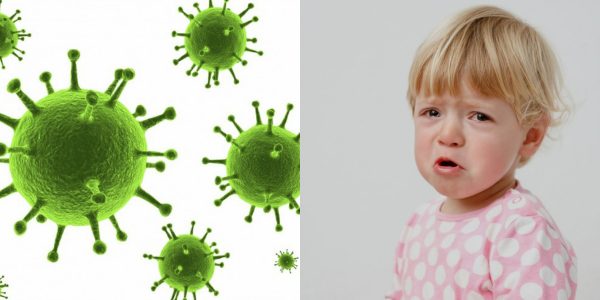
Diseases of the central nervous system
Nausea in the morning and vomiting are considered one of the obvious symptoms of inflammation of the meninges (meningitis) or brain (encephalitis). In addition to nausea, there is repeated vomiting, high body temperature, severe headache and even convulsions. This condition is serious and requires immediate hospitalization and intravenous administration of medications, usually broad-spectrum antibiotics (Cefatoxime) and painkillers (Paracetamol). Conditions of the nervous system also include increased intracranial pressure, in which the child often feels sick in the morning, also has a headache and uncontrollable vomiting. The child becomes lethargic and inactive. Increased intracranial pressure may occur due to head trauma, inflammation, bleeding, and swelling.
Brain tumor in a child
The first sign of the disease is headaches (mainly in the occipital region), accompanied by nausea, vomiting and observed after morning or afternoon sleep. In the initial stage of development of the disease, nausea in a child in the morning is observed 1 - 2 times a week. Symptoms increase as the disease progresses. Visual disturbances, double vision occur, an unsteady gait and asymmetry in body movements appear. Computed tomography of the brain can confirm or exclude this diagnosis with great accuracy. Treatment depends on the location, extent and severity of the disease. Typically this is a surgical procedure.
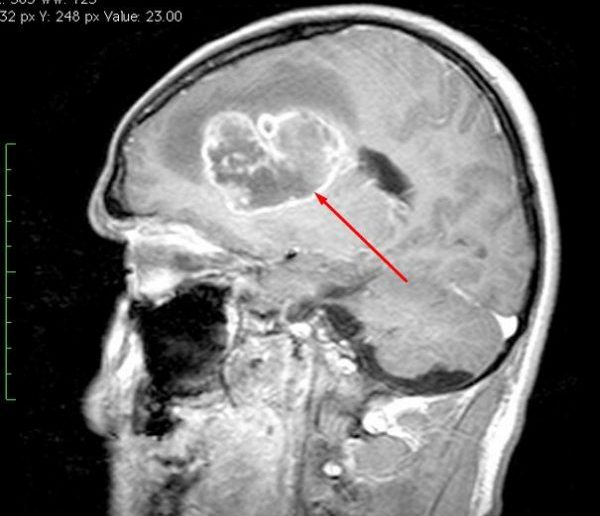
Surgical diseases
A common disease that also causes nausea in the morning is acute appendicitis. This inflammatory process, which affects the cecum of the large intestine, is also characterized by vomiting, pain in the central and right lower abdomen, and increased body temperature. This pathology requires surgical intervention; in some cases, broad-spectrum antibiotics can be used.
In addition to the above diseases or disorders, nausea can also occur for other reasons: dehydration, overeating, stress, psychological pressure, allergic reactions. Each child’s body is special and reacts differently to certain disorders. Adult children are able to inform their parents about their ailments, but when this symptom is observed in infants, an individual approach is needed. Based on the foregoing, we can conclude that nausea in a child is often accompanied by other severe symptoms that cannot be left without due attention.
Intracranial pressure
If a child feels sick in the morning, this may be a symptom of a neurological pathology. The main symptom in this case is headache and fatigue. Such an ailment must be corrected. Otherwise, unpleasant consequences arise.
Contact a neurologist and get examined. Most likely, the doctor will prescribe neurosonography. Depending on the result, additional tests may be needed. Treatment of pathology in most cases is complex. So, the doctor prescribes nootropics that correct cerebral circulation, for example, Trental, Gliatilin, Piracetam and others. At the same time, the baby is prescribed sedative medications (Phenibut, Tenoten, Valerian). Be sure to take vitamin complexes during treatment (“Magnerot”, “Magnelis”, “Neuromultivit”). Remember that all of these drugs can be used only after consulting a specialist. Many of them are selected according to the age and weight of the baby.
How to help your child get rid of nausea
If a child experiences nausea in the morning, parents should evaluate and act according to the situation. If other pronounced symptoms are observed, the baby becomes worse, then you urgently need to call a doctor at the clinic or an ambulance, who can conduct a proper examination, make a diagnosis, prescribe treatment, and, if necessary, hospitalize him in a hospital. Before the doctor arrives, the child should be placed on his side to prevent vomit from entering the lungs, drink plenty of fluids, preferably a teaspoon, in small quantities to prevent dehydration, and bed rest.
If the child has nausea and vomiting is absent or appears once, the condition is satisfactory, then you can wait to call a doctor. There are a number of medications traditionally used for nausea or intestinal dysfunction, but one must remember that these are only symptomatic remedies that do not remove the cause, but only alleviate the child’s condition. Such drugs include Cerucal and Ondansetron; they improve intestinal motility, eliminate nausea and normalize digestion.
Also effective are the drugs “Enterosgel”, “Atoxil”, “Regidron” - they are used for poisoning or intestinal infections. In addition, for poisoning, they use “Activated carbon” “Smecta” and “Linex”. Before taking any medication, you should read the instructions or consult your doctor. For children, the above drugs are prescribed in accordance with the return, body weight and other characteristics of the body.
If nausea occurs often in the morning, parents need to seek help from a doctor - a gastroenterologist, who, after collecting complaints and examination, will prescribe the necessary laboratory and instrumental examinations (CT, EEG) that will help identify the cause of the ailment or refer to another specialist - a neurologist, infectious disease specialist, surgeon. You should not always self-medicate; it can be ineffective at best, and more often leads to aggravation of the disease or unnecessary complications.
The child is sick. What do doctors say?
If your child feels sick, you should consult a doctor. This is what all pediatricians unanimously say. It is worth noting that nausea is not an independent disease. In most cases, this is just a symptom of some pathology. In this case, the disease may have additional manifestations. Some of them require immediate help. That is why it is worth carefully monitoring the baby in this condition and, if necessary, calling an ambulance.
Doctors say that weakness and nausea cannot be correctly identified by the baby. Children under 7-9 years old simply cannot describe this condition. The children say that something hurts them, but they cannot correctly formulate a story about how they feel. Nausea in children is often accompanied by vomiting. This is the so-called continuation of the development of the pathological symptom. Let's try to figure out why sometimes a child feels sick and how you can cope with this unpleasant symptom.
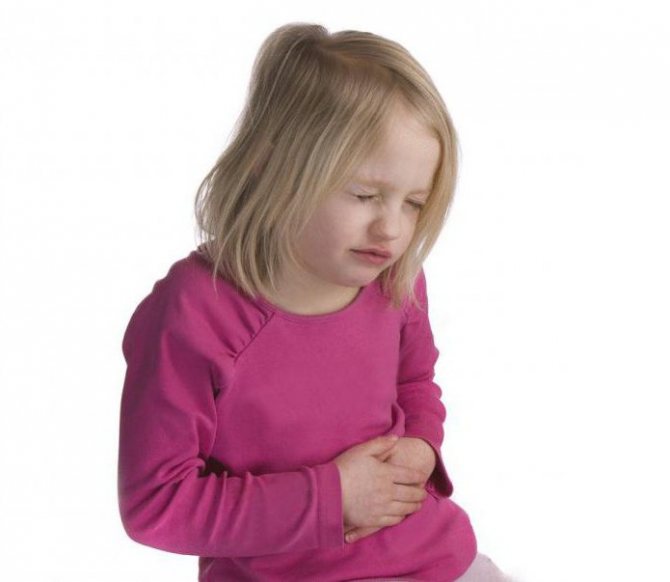
General concept
Nausea is a subjectively unpleasant feeling of fullness in the stomach , accompanied by a desire to empty it using the gag reflex.
The condition may be accompanied by pale skin, dizziness, general weakness or other abnormalities in the functioning of the body.
Nausea always has certain causes and triggers. In children, this condition can be provoked not only by external irritants or pathologies of internal organs, but also by natural characteristics of the body.
Symptoms of nausea in infants
Donated blood for testing - the child’s leukocytes are elevated, reasons
An infant may vomit in the morning, this will clearly indicate the problem. If he is simply nauseous, and he still does not know how to speak, then the mother should know what symptoms indicate the manifestation of malaise.
If your baby has digestive system disorders, this may be accompanied by:
- diarrhea or constipation;
- increased temperature;
- abdominal pain;
- vomiting mixed with bile, which indicates appendicitis, stomach infections and poisoning;
- vomiting mixed with blood, a symptom of internal bleeding and damage to the mucous membranes.
Symptoms for common infectious diseases and other causes:
- the baby is restless, sleeps poorly;
- manifestations of a cold: nasal congestion, cough;

The child has a cold
- it may be the other way around – drowsiness;
- pale skin;
- increased sweating;
- salivation.
Causes
In children of different ages, the causes of nausea in most cases do not differ.
The exception is newborns and infants . In this age category of children, the risk of nausea is largely due to the immaturity of the digestive system.
Unpleasant attacks can be triggered by overeating, hunger or improper feeding.
The risk of infection in the body cannot be ruled out either.
In older children, nausea occurs under the influence of numerous external and internal factors. Common causes of nausea in children :
- food poisoning or exposure to toxic substances;
- damage to the body by intestinal infections;
- progression of acute infections;
- pathologies of the central nervous system;
- consequences of overeating or feeling hungry;
- damage to the body by parasites or helminthic infestation;
- excessive overexcitation of the nervous system;
- brain diseases;
- consequences of head injuries;
- pathologies of the digestive system;
- foreign bodies in the gastrointestinal tract;
- increased intracranial pressure;
- the result of early complementary feeding with inappropriate foods;
- progression of an allergic reaction in the body;
- consequences of nervous tension or stress;
- deviations in the vestibular apparatus.
Why might children feel sick?
The causes of nausea may vary depending on the time of onset of attacks, antecedent factors and additional symptoms.
If a child vomits regularly , then special attention should be paid to identifying provoking situations.
This nuance can facilitate diagnosis and help a specialist determine the exact causes of the unpleasant condition.
Relationship between nausea and provoking factors:
- Nausea in the morning (morning nausea can be triggered by a child’s elementary feeling of hunger; if the symptom appears regularly, it can be triggered by increased secretion of acid from the stomach; regular morning sickness indicates the progression of pathologies in the child’s body associated with the central nervous or digestive system).
- Attacks of nausea in transport (in most cases, nausea in transport is a consequence of disorders of the vestibular apparatus, which in medical practice is called kinetosis; this condition can be provoked by the natural immaturity of some systems of the child’s body, overeating before a trip or the consequences of nervous overexcitation, for example, if the baby is afraid) .
- Nausea after eating (after eating food, nausea indicates abnormalities in the functioning of the digestive system; if in addition the child has a fever, the risk of intestinal infections increases; special attention should be paid to the quality of the products that the child has eaten).
- A feeling of intestinal fullness after nervous stress (the child’s nervous system is in close relationship with the digestive tract; nausea can be provoked by excessive delight, fear, as well as other emotions that the baby experiences; regular attacks indicate the progression of central nervous system pathologies, which require mandatory examination).
- Attacks of nausea after active games (the cause of nausea after active games can be two factors - a violation of the vestibular apparatus and excessive sensitivity of the nervous system, it is additionally necessary to pay attention to the previous consumption of food, if the child ate heavily and began to play, then the reasons may lie in this nuance, deviation such a condition will not be considered).
What can cause frequent attacks?
Regular attacks of nausea in children indicate the progression of pathologies in the body .
They may be associated with inflammatory processes, damage to internal organs by infections, viruses and bacteria, as well as many other conditions.
Only a doctor can find out the exact cause of frequent attacks based on an examination of a small patient.
Frequent nausea indicates pathologies of the following body systems:
- vestibular apparatus;
- central nervous system;
- endocrine system and thyroid gland;
- digestive tract;
- brain.
Nausea: causes
Nausea is a symptom that manifests itself with various changes in the body that have led to a deterioration in its functioning. It is difficult to count the exact number of reasons for its appearance.
If the intensity of nausea is insignificant and the child’s overall condition is normal, then the problem is a functional disorder of the digestive system. The reason is mistakes made during the establishment of the child’s diet:
- binge eating;
- inappropriate complementary feeding;
- products not suitable for consumption;
- poorly prepared infant formula;
- heavy foods (this includes fried, fatty, salted, smoked, pickled dishes, as well as those that use a lot of seasonings and spices);
- violation of feeding regime;
- exotic dishes and products.
Disorders that cause nausea are sometimes associated with impaired development of the child's body. The phenomenon of nausea at this time is explained by the fact that there is a problem of lack of pancreatic enzymes, as well as bile in the duodenum.
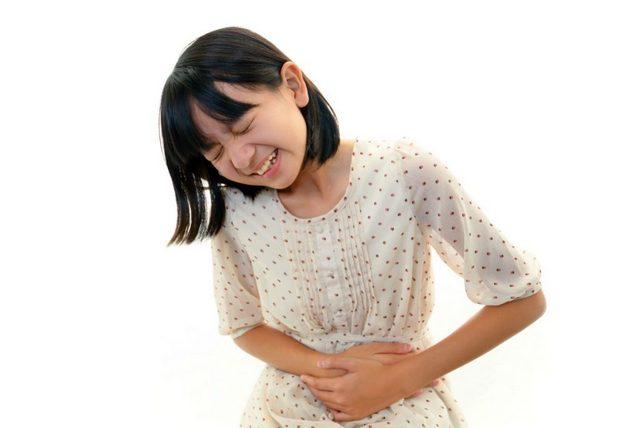
There are many causes of nausea and vomiting
The second most common cause is food poisoning or acute intestinal infection. In such cases, nausea and vomiting in the child are the main symptoms. The degree of gastrointestinal damage is determined by the intensity and nature of their manifestation. Pathology mainly develops as a result of bacteria (staphylococci, streptococci, shigella) entering the body through the consumption of spoiled foods. Symptoms of food poisoning differ from those of an intestinal infection in that the child does not have a change in body temperature. There is also no excessive repeated vomiting or diarrhea, dehydration and severe intoxication of the body.
If we talk about infectious diseases, the following diseases can cause nausea:
- infectious gastritis;
- cholecystitis;
- viral pancreatitis;
- ARVI.
Other causes of nausea in a child:
- weak vestibular apparatus. Nausea in children appears in moving vehicles (the reason is motion sickness). It can also occur due to a sudden change in body position (but this is if the child is weakened due to a long illness);
- physical brain injuries - bruises, concussions, etc.;
- sunstroke or heatstroke in the warm season;
- side effect of taking medications;
- long course of therapeutic diet;
- entry of a foreign body into the stomach.
What to do?
If an attack of nausea occurs, the child must be given first aid.
Parents are required to know the correct algorithm of actions.
Otherwise, you can cause harm to the child’s body through your own mistakes. If nausea is accompanied by uncontrollable vomiting or does not go away for a long time, then you need to call an ambulance.
Algorithm for dealing with nausea in a child:
- Place the child on his left side (this will make breathing easier and prevent the baby from swallowing vomit).
- If a child is suspected of being poisoned, it is necessary to induce vomiting.
- You can give your baby antiemetic drugs appropriate for his age category.
- If you have difficulty breathing, you should provide fresh air, open a window, and unfasten your clothes.
- If the child has lost consciousness, use ammonia applied to a handkerchief or cotton pad (bring it to the baby’s nose for a few seconds).
- Avoid dehydration of the baby (water can only be given in small sips).
- If the baby’s condition does not improve, call an ambulance.
What can you give?
A single attack of nausea involves providing the child with first aid and restoring the body with special medications .
If the baby’s condition quickly recovers, then medications can be replaced with some alternative medicine recipes.
If regular attacks occur, it is necessary to consult a specialist, undergo an examination and be sure to find out the cause of nausea.
Drugs
Medicines intended to eliminate attacks of nausea have age restrictions. This nuance must be taken into account when independently selecting drugs.
If the remedy does not correspond to the age category of the child, then taking it will not alleviate, but will aggravate his condition.
The best option is to consult a doctor. If there are pathological processes in the baby’s body, treatment of nausea with antiemetic medications will not be limited. There will be a need for complete and complex therapy .
Examples of medications to relieve nausea in children:
- antiemetics (Hofitol, Cerucal, Kokulin);
- first aid for food poisoning (Activated carbon);
- antacids (Rennie, Gaviscon);
- anti-motion sickness drugs (Histamine, Dramamine);
- medicines to strengthen the muscles of the stomach (Ondansetron).
Folk remedies
Effective remedies for nausea are folk recipes based on medicinal herbs .
Such options for eliminating an attack can only be used when it occurs once.
If additional symptoms appear
Nausea can occur as an independent symptom or be accompanied by other conditions. Based on such combinations, one can draw conclusions about the causes of the attack and make a preliminary diagnosis .
If nausea occurs without vomiting and additional symptoms, then special attention should be paid to previous situations (the child was seasick in transport, the baby ate too much, etc.).
Association of nausea with additional symptoms:
- Fever (increased body temperature in combination with nausea can be a symptom of infectious diseases; the risk of infection affecting the child’s body increases if other symptoms are added to nausea and fever, for example, abdominal pain or diarrhea).
- Vomiting (nausea in most cases provokes vomiting; the cause of this condition can be external or internal factors; if nausea and vomiting occur once, then there may be no reason for serious concerns; frequent attacks indicate a malfunction of the internal systems of the child’s body).
- Diarrhea (nausea accompanied by diarrhea, in most cases indicates abnormalities in the digestive system, but in some cases such symptoms may indicate nervous overexertion in the child).
- Abdominal pain (nausea and pain in the abdominal area are caused by diseases of the digestive tract, as well as the consequences of food poisoning or foreign bodies entering the gastrointestinal tract).
- Dizziness (nausea in most cases is accompanied by general weakness of the body and dizziness, these symptoms are interrelated and rarely appear separately, the condition may indicate any of the provoking factors - infections, diseases of the digestive system, motion sickness, etc.).
Pathology requiring surgical intervention
Nausea in a child can become a symptom of a pathology that cannot be corrected at home. Such diseases include pancreatitis, appendicitis, cholecystitis, strangulated hernia, and so on. At the same time, these diseases may have the following symptoms: vomiting, weakness, diarrhea or constipation, abdominal pain, fever, weakness, and so on. Any delay and lack of timely assistance can lead to unpleasant complications.
Treatment of most of these diseases requires immediate medical intervention. This is usually a standard operation performed under general anesthesia. After such an intervention, it is necessary to follow the doctor’s instructions and adhere to a certain diet. Often, medicinal methods are required that will become prophylactic and prevent the re-development of the pathology.

Diagnostics
Diagnosis of nausea in a child is carried out using a complex method. If the doctor is unable to identify the provoking factor, then an additional consultation with specialized specialists .
The child may need to be examined by an endocrinologist, gastroenterologist, immunologist, infectious disease specialist, surgeon, etc. Therapy is prescribed by a doctor whose profile includes the identified pathology.
At the initial stage of examining the child, a general and biochemical analysis of blood and urine is required to determine the inflammatory process .
The following methods are used for diagnosis:
- bacteriological analysis of feces and vomit;
- detailed blood test;
- immunological studies;
- Ultrasound of the digestive organs;
- CT and MRI of the brain;
- X-ray of the abdominal cavity.
Prevention
Preventative measures to prevent nausea in a child depend on his general health and the factors that provoke the attack.
For example, if a baby gets sick in transport , then prevention will consist of training the vestibular system and following certain rules before traveling.
If nausea occurs due to abnormalities in the digestive system , the recommendations will differ.
Prevention of nausea in children includes the following recommendations :
- Regular training of the vestibular apparatus (travelling short distances, riding on swings, merry-go-rounds, playing on a trampoline, etc.).
- General strengthening of the child’s body with vitamin complexes appropriate for his age.
- Timely and complete treatment of diseases of the digestive, nervous and other internal systems of the body.
- Prevention of infectious damage to the child’s body (strengthening the immune system, taking special medications during exacerbation of epidemics).
- Avoiding regular overeating or starvation of the baby (conditions can provoke not only nausea, but also the development of serious diseases of the digestive system).
Nausea is not a disease, but its appearance may indicate the progression of serious pathologies in the child’s body . The cause of frequent attacks must be clarified. Timely diagnosis of nausea can help identify abnormalities at an early stage.
Nausea: causes, symptoms, possible foci of the disease and treatment - video:
We kindly ask you not to self-medicate. Make an appointment with a doctor!
Everyone has had to deal with nausea. This is an extremely painful sensation in the upper abdomen (epigastric, epigastric region) and pharynx. Sometimes it is accompanied by weakness, chills, dizziness, and the urge to vomit. This condition is not an independent disease, but only part of some pathological process in the child’s body. Therefore, when children complain of nausea, this seemingly insignificant symptom should not be ignored, so as not to miss a serious disease. Knowing the reasons that caused the painful clinic will allow parents to promptly identify the problem and effectively deal with it.
Prevention and prognosis
To prevent the child from experiencing nausea and vomiting, high fever and other symptoms of illness, parents need to monitor compliance with simple preventive measures, including:
- avoidance of nervous tension and physical exhaustion;
- rationalization of diet;
- drinking enough liquid;
- rational use of medications - the medicine should be prescribed only by a clinician;
- body weight control;
- timely identification of pathologies in the clinic of which there is nausea;
- regular visits to the pediatrician.
Nausea in children has a favorable prognosis provided that adequate therapy is provided. A complete lack of treatment (even when there are attacks of nausea and vomiting in a child without fever) is fraught with frequent relapses of lightheadedness and the development of complications.
Morning sickness problem
Feeling sick in the morning in children of all ages can be caused by a number of reasons.
Younger children are not yet able to complain and explain what exactly bothers them. Parents may suspect poor health based on the following symptoms:
- Kids become capricious and lethargic.
- They refuse breakfast.
- Children experience drooling.
- Children are characterized by increased weakness.
- They can point to the tummy and pull the legs towards it.
Older children and teenagers accurately describe their feelings.
Complaints of morning sickness in a child of any age cannot be ignored . This is a rather alarming symptom. Perhaps it indicates the development of a serious illness or deterioration of the condition due to some pathology.
The mechanism of development of nausea in the morning
To understand the mechanism of development of nausea, you need to understand which body structures are responsible for the occurrence of this sensation. As you know, nausea is a precursor to vomiting. But it can also occur as a separate symptom. Vomiting, in turn, is a protective reflex. By regurgitating gastric contents, the body tries to expel toxic substances.
Their occurrence is based on the regulatory activity of the nervous system. There are two zones responsible for these phenomena:
- The first zone is the vomiting center, located in the medulla oblongata.
- The second is the receptor zone, in the area of the bottom of the fourth ventricle of the brain.
Impulses coming from different organs stimulate the activity of these zones. It is as a result of such stimulation that an unpleasant sensation occurs - nausea.
Main types
Thus, nausea in origin can be:
- Central. With irritation of the vomiting center (psychogenic). It appears in diseases of the structures of the central nervous system.
- Reflex. When irritating impulses come from various organs.
- Toxic. When reflexogenic centers are irritated by poisons, toxins, or drugs in the blood.
Doctor Komarovsky about the disease - video
Measures to prevent morning nausea
Each parent can take a number of measures to prevent nausea:
- Carefully select products that are intended for the baby: pay attention to the expiration date and condition of the products;
- Use safe cooking methods (do not fry and cook until fully cooked); rinse fruits and vegetables well; avoid foods with high fat content;
- Try to create a favorable emotional atmosphere;
- Carry out hardening procedures;
- Get vaccinated on time and consult a doctor if symptoms of disease appear.
Whatever the cause of morning sickness in children, it is necessary to find out and take all possible measures to prevent further unpleasant manifestations.
The main reasons for the appearance of symptoms in a child
If nausea bothers the child very rarely, goes away on its own and does not cause much discomfort, then in this case there is little reason for concern. In the opposite situation, it is imperative to go with the little patient to a consultation with a specialist.
There are many reasons for morning sickness.
Pathology of the gastrointestinal tract:
- chronic inflammation of the stomach and intestines (gastric and duodenal ulcers, gastritis, duodenitis, reflux, constipation, ileitis, colitis);
- chronic diseases of the gallbladder, its ducts, pancreas (cholecystitis, cholangitis, dyskinesia, pancreatitis);
- food allergies;
- various nutrient malabsorption disorders;
- acute lesions at the beginning of the development of the pathological process (appendicitis, intestinal obstruction, peritonitis);
- disturbance of peristalsis of any part of the gastrointestinal tract;
- foreign bodies;
- developmental anomalies (atresia, rotation disorders, stenoses);
- bleeding from the gastrointestinal tract;
- poisoning (food poisoning).
Treatment options
Before treating nausea, it is important to make sure that the child does not have a serious pathology. Therefore, if your son or daughter has frequent complaints about a painful phenomenon in the morning or at other times of the day, the first thing you should do is consult a doctor.
In the absence of serious reasons for concern, both medications and traditional medicine can be used to alleviate the child’s condition, along with dietary nutrition.
Dietary recommendations
A diet for a tendency to nausea is prescribed according to the underlying disease.
Following these principles will help reduce attacks of nausea:
- regular meals;
- exclusion or limitation of fatty and fried foods;
- fractional meals in small portions;
- food is lukewarm;
- drinking should be sufficient, you need to drink in small sips, often, preferably chilled drinks (fruit drinks, compotes, diluted juices);
- feeding by appetite, not by force;
- food is complete, easily digestible, fortified;
- excluding dry snacks, “stall” food (crackers, chips, candy bars, soda), limiting fast food.
Drug therapy
The following medications are recommended to relieve nausea:
- Medicines for motion sickness:
- Scopolamine (in the form of a motion sickness patch, Aeron) - for children over 7 years old;
- Prokinetics (Aviomarin, Dramina, Ciel);
- Syrups for young children (Riabal, No-spasm).
- Antispasmodics (No-shpa, Papaverine).
- Enterosorbents (Smecta, Enterosgel).
- Means that improve gastrointestinal motility (Motilak, Motilium, Cerucal).
- Agents that reduce the aggressive effect of hydrochloric acid (Almagel, Phosphalugel).
- Sedatives (Motherwort, Phenibut, Valerian).
Medicines for nausea - photos
Folk remedies
To reduce the symptoms of nausea, you can use non-traditional treatment:
- Dissolve slices of fresh lemon or pieces of ice in your mouth.
- Dissolve 1 tsp in 1 glass of water. soda and drink if you feel nauseous.
- Drink peppermint infusion 3 times a day, 1 tbsp. l. Leaves (1 tablespoon) pour a glass of boiling water. Leave in a warm place for 2 hours. Strain before use.
- Use a medicinal decoction of dill seeds for nausea. Boil raw materials (1 tsp) in a glass of boiling water. Strain and take half a glass.
- Drink lemon balm infusion. Pour boiling water (1 tbsp) over the grass (4 tsp). Leave for 4 hours. Strain and take half a glass, 4 times.
Additional events
In addition to medication and diet therapy, parents are advised to follow a few more advice from doctors:
- A set of general strengthening physical exercises helps reduce nausea. However, it is necessary to exclude bending and excessive abdominal tension from gymnastics.
- The child should spend a lot of time outdoors. Saturation of the body with oxygen has a beneficial effect on the functioning of all systems.
- Emotional and mental fatigue is excluded. Perhaps the child is overly busy in different sections. It is recommended to review his daily routine. If possible, you should give up some additional activities.
Forecast and consequences
Nausea itself, other than an uncomfortable sensation, does not cause harm to the body. It is a signal to parents that something is wrong with the child . Therefore it requires close attention.
Sometimes it can cause negative consequences:
- Frequent attacks can provoke a refusal to eat. And this will lead to a lack of nutrients, minerals, and vitamins in the child’s body.
- If nausea is accompanied by frequent and repeated vomiting, then dehydration develops.
- Nausea and vomiting are especially dangerous in young children. Stomach contents may enter the respiratory system. The airways will become blocked or inflammation will occur. In these conditions, the child requires emergency medical care.
If nausea in a teenager is not associated with any disease, then most often it goes away with the end of puberty.
Prevention
To protect a child from nausea, it is necessary to prevent diseases that can cause it.
Doctors recommend adhering to the following general recommendations to prevent the development of an unpleasant condition:
Nausea is an unpleasant feeling that occurs in children of any age. Having found out the reason for its development, parents can adequately help their child. There are many ways to eliminate painful symptoms in the epigastrium. But only a doctor should select them. Do not forget that nausea in a child is a serious reason to see a doctor. After all, sometimes it is through nausea that the baby’s body “screams” for help!


